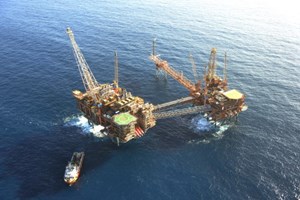Oil industry faces test over Equinor’s plan to drill off Australian coast
SYDNEY (Bloomberg) - A continent-sized bay south of Australia is set to become a battleground, pitting the nation’s powerful environmental lobby against the world’s biggest offshore petroleum company in a test that could prove a watershed moment for big oil.
Australia’s offshore petroleum regulator is due to decide by Nov. 14 whether to approve Norwegian energy giant Equinor ASA’s plan to drill exploration wells in the Great Australian Bight. Early estimates suggest the Bight could hold the equivalent of 1.9 Bbbl of oil, though it’s been lightly explored and experts believe the true figure could be much higher.
“The idea of opening up a new oil and gas field in the Bight, which wouldn’t really start delivering oil for at least 10 years if not closer to 15, is madness in today’s era of needing to reduce carbon pollution,” said Sarah Hanson-Young, a Greens Party senator and leading campaigner against Bight development.
Equinor, formerly known as Statoil, has pledged its support for the Paris climate accord, and advocates for exploration in the Bight argue that the gas reserves would help reduce the need for more-polluting coal-fired energy. Environmental lobby group Carbon Tracker says an oil industry pipeline of some $50 billion in new projects isn’t compatible with the Paris agreement to limit a rise in global temperature to less than 2 degrees Celsius.
“Most scenarios still show oil as being an important product for many decades to come,” Equinor said in an email. “Producing fields are being depleted, and even in a 2 degrees scenario, current discovered commercial resources still leave a gap to meet the expected future demand.” The company said its exploration activities were complemented by plans to reduce its emissions by investing in renewable energy.
“If the exploration is successful, there are significant economic benefits in an environment where Australia’s oil production has been declining,” said Matthew Doman, director of external affairs at the Australian Petroleum Production & Exploration Association, an industry group, adding that APPEA supported the Paris climate targets.
A study commissioned by the group in 2018 said an oil industry in the Bight could create over 2,000 jobs in South Australia and boost the country’s GDP by A$5.9 billion ($4 billion) a year. The government’s Resources Minister Matt Canavan said earlier this year that offshore oil exploration is a “national priority.”
Brand Damage
The Bight has been a prospect that oil majors have struggled to understand. Some, including Chevron Corp. and BP Plc, have walked away in recent years. More than 85% of the species found in the Bight are unique to the region, which is a migratory path for the endangered southern right whale.
Equinor has long experience of deep-sea drilling in the North Sea and the company acquired two exploration permits in the Bight in 2017 as part of a swap deal with BP. If it gets regulator approval, it plans to start drilling in late 2020.
“Equinor has safely drilled more than 65 deepwater wells and operated for decades in stronger winds, higher waves and colder waters than the Great Australian Bight,” the company said in a 1,500-page draft environment plan released in February.



